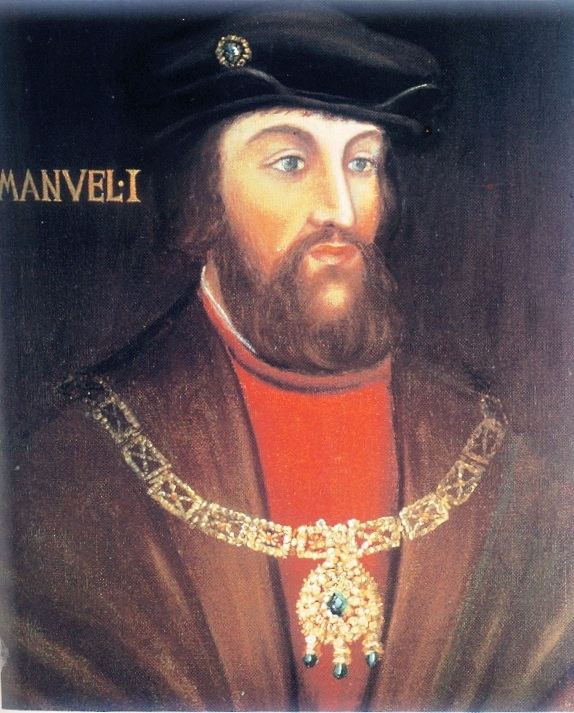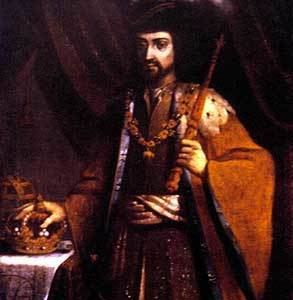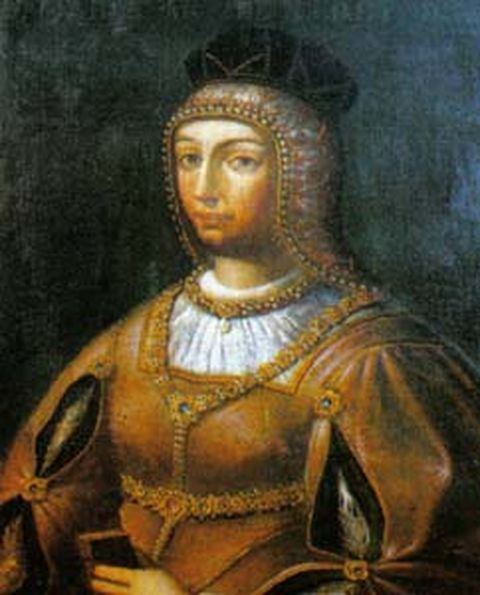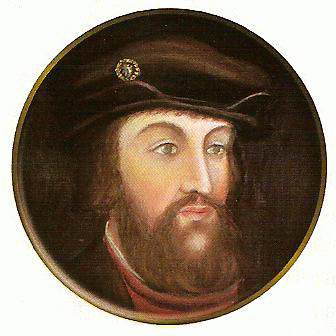Acclamation 27 October 1495 Name Manuel of Burial Jeronimos Monastery | Successor John III Predecessor John II Role King of Portugal | |
 | ||
Reign 25 October 1495 –
13 December 1521 Born 31 May 1469
Alcochete, Kingdom of Portugal ( 1469-05-31 ) Consort Isabella, Princess of Asturias
Maria of Aragon
Eleanor of Austria Died December 13, 1521, Lisbon, Portugal Spouse Eleanor of Austria (m. 1518) Children John III of Portugal, Isabella of Portugal Parents Beatrice, Duchess of Viseu, Ferdinand, Duke of Viseu Siblings Eleanor of Viseu, Diogo, Duke of Viseu Similar People John II of Portugal, John III of Portugal, John I of Portugal, Afonso V of Portugal, Sebastian of Portugal | ||
Manuel i of portugal
Manuel I ([mɐ̃nʊˈɛɫ]; 31 May 1469 – 13 December 1521), the Fortunate (Port. o Afortunado), King of Portugal and the Algarves, was the son of Ferdinand, Duke of Viseu, by his wife, the Infanta Beatrice of Portugal. His name is associated with a period of Portuguese civilization that was distinguished by significant achievements both in political affairs and the arts. In spite of its small size and population in comparison to the great land powers of Europe, Portugal, during Manuel's reign, was able to acquire an overseas empire of vast proportions, the first in world history to reach global dimensions.
Contents
- Manuel i of portugal
- Early life
- Imperial Growth
- Manueline Ordinations
- Religious policy
- The Jews in Portugal
- Later life
- Marriages and descendants
- References

Early life

Manuel's mother was the granddaughter of King John I of Portugal, whereas his father was the second surviving son of King Edward of Portugal and the younger brother of King Afonso V of Portugal. In 1495, Manuel succeeded his first cousin, King John II of Portugal, who was also his brother-in-law, as husband to Manuel's sister, Eleanor of Viseu.

Manuel grew up amidst conspiracies of the Portuguese upper nobility against King John II. He was aware of many people being killed and exiled. His older brother Diogo, Duke of Viseu, was stabbed to death in 1484 by the king himself.

Manuel thus would have had every reason to worry when he received a royal order in 1493 to present himself to the king, but his fears were groundless: John II wanted to name him heir to the throne after the death of his son Prince Afonso and the failed attempts to legitimise Jorge, Duke of Coimbra, his illegitimate son. As a result of this stroke of luck, he was nicknamed the Fortunate.
Imperial Growth

Manuel would prove a worthy successor to his cousin John II for his support of Portuguese exploration of the Atlantic Ocean and development of Portuguese commerce. During his reign, the following achievements were realized:
1498 — The discovery of a maritime route to India by Vasco da Gama.
1500 — The discovery of Brazil by Pedro Álvares Cabral.
1505 — The appointment of Francisco de Almeida as the first viceroy of India.
1503–1515 — The establishment of monopolies on maritime trade routes to the Indian Ocean and Persian Gulf by Afonso de Albuquerque, an admiral, for the benefit of Portugal.
The capture of Malacca in modern-day Malaysia in 1511 was the result of a plan by Manuel I to thwart the Muslim trade in the Indian Ocean by capturing Aden, blocking trade through Alexandria, capturing Ormuz to block trade through the Persian Gulf and Beirut, and capturing Malacca to control trade with China.
All these events made Portugal wealthy from foreign trade as it formally established a vast overseas empire. Manuel used the wealth to build a number of royal buildings (in the "Manueline" style) and to attract scientists and artists to his court. Commercial treaties and diplomatic alliances were forged with China and the Persian Empire. Pope Leo X received a monumental embassy from Portugal during his reign designed to draw attention to Portugal's newly acquired riches to all of Europe.
Manueline Ordinations
In Manuel's reign, royal absolutism was the method of government. The Portuguese Cortes (the assembly of the kingdom) met only three times during his reign, always in Lisbon, the king's seat. He reformed the courts of justice and the municipal charters with the crown, modernizing taxes and the concepts of tributes and rights. During his reign, the laws in force in the kingdom of Portugal were recodified with the publication of the Manueline Ordinations.
Religious policy
Manuel was a very religious man and invested a large amount of Portuguese income to send missionaries to the new colonies, among them Francisco Álvares, and sponsor the construction of religious buildings, such as the Monastery of Jerónimos. Manuel also endeavoured to promote another crusade against the Turks.
The Jews in Portugal
His relationship with the Portuguese Jews started out well. At the outset of his reign, he released all the Jews who had been made captive during the reign of John II. Unfortunately for the Jews, he decided that he wanted to marry Infanta Isabella of Aragon, then heiress of the future united crown of Spain (and widow of his nephew Prince Afonso). Ferdinand and Isabella had expelled the Jews in 1492 and would never marry their daughter to the king of a country that still tolerated their presence. In the marriage contract, Manuel I agreed to persecute the Jews of Portugal.
In December 1496, it was decreed that all Jews either convert to Christianity or leave the country without their children. However, those expelled could only leave the country in ships specified by the king. When those who chose expulsion arrived at the port in Lisbon, they were met by clerics and soldiers who tried to use coercion and promises in order to baptize them and prevent them from leaving the country.
This period of time technically ended the presence of Jews in Portugal. Afterwards, all converted Jews and their descendants would be referred to as "New Christians", and they were given a grace period of thirty years in which no inquiries into their faith would be allowed; this was later extended to end in 1534.
During the course of the Lisbon massacre of 1506, people invaded the Jewish Quarter and murdered thousands of accused Jews; the leaders of the riot were executed by Manuel.
Later life
Isabella died in childbirth in 1498, thus putting a damper on Portuguese ambitions to rule in Spain, which various rulers had harbored since the reign of King Ferdinand I (1367–1383). Manuel and Isabella's young son Miguel was for a period the heir apparent of Castile and Aragon, but his death in 1500 at the age of two years, ended these ambitions.
Manuel's next wife, Maria of Aragon, was his first wife's younger sister. Maria died in 1517 but the two sisters were survived by an older sister, Joanna of Castile, who was born in 1479 and had married the Archduke Philip (Maximilian I's son) and had a son, Charles V who would eventually inherit Spain and the Hapsburg possessions.
In 1506, Pope Julius II gave Manuel I a Golden Rose. Later in 1514 Pope Leo X also gave Manuel I a second Golden Rose. Manuel I became the first individual to receive more than one Golden Rose after King Sigismund von Luxembourg.
Manuel died of unknown reasons on December 13 of 1521 at age 52. The Jerónimos Monastery in Lisbon houses Manuel's tomb. His son João succeeded him as king.
Marriages and descendants
Negotiations for a marriage between Manuel and Elizabeth of York in 1485 were halted by the death of Richard III of England. He went on to marry three times. His first wife was Isabella of Aragon, princess of Spain and widow of the previous Prince of Portugal Afonso. Next he married another princess of Spain, Maria of Aragon (his first wife's sister), then Eleanor of Austria, a niece of his first two wives who married Francis I of France after Manuel's death.
